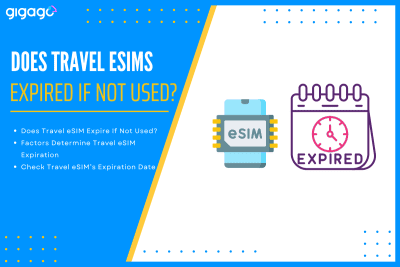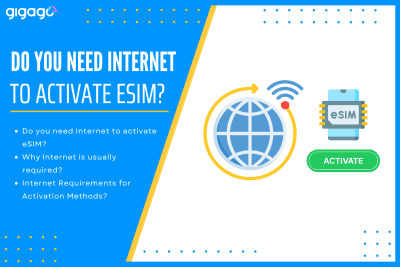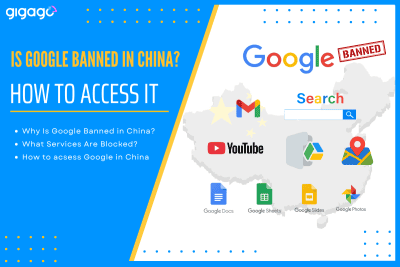Many travelers who use AT&T in the U.S. wonder if their mobile plan still works once they land in China. It’s a common question because, after all, AT&T serves about 45% of U.S. mobile users, so many Americans rely on it when traveling abroad. The short answer is yes, AT&T roaming does work in China, […]
eSIM vs. T-Mobile Roaming for China: Which is better for travelers?
When traveling to China, you generally have two main options for staying online: use T-Mobile’s built-in international roaming or purchase a travel eSIM for China for faster, more reliable data. Let’s compare eSIM vs. T-Mobile roaming for China in terms of how each option works, purchase, installation, activation, cost, compatibility, and more – all aiming to help you figure out which solution actually makes sense for your China trip.

In this article
I. eSIM vs. T-Mobile roaming in China – Compare side-by-side
T-Mobile includes international coverage in many of its plans. When you arrive in China, your phone automatically connects to one of T-Mobile’s partner networks — typically China Mobile or China Unicom.
On the other hands, a China eSIM is a digital SIM card that allows you to download a mobile data plan instantly, without using a physical SIM card. This has become a popular alternative to roaming.
Below is a quick comparison between eSIM and T-mobile roaming for China travel.
| Factor | Travel eSIM | T-Mobile Roaming |
|---|---|---|
| Purchase channel | Buy online before/after departure | Built-into current plan; optional add-on passes |
| Compatibility | Any unlocked, eSIM-ready phone | Any T-Mobile line; no hardware limit |
| Activation | Scan QR → auto-activate on arrival | Auto-connect on arrival |
| Data speed | Local 4G/5G | 128 kbps free · 4G only with paid pass |
| Cost example (7 days, 5 GB) | US $14 | US $50 “International Pass” |
| Voice/SMS | App-based calls / no local number | Keeps US number for calls & SMS |
| Internet censorship | Same Great Firewall limits | Same Great Firewall limits |
| Ideal for | Long trips, heavy data | Very short trips, light use |
II. Compare eSIM vs. T-Mobile roaming by Factor
1. Plan, Features and Limitations
1.1. T-Mobile roaming:
Plans and features:
- Magenta and Magenta MAX Plans: These plans offer unlimited international data and texting in 215+ countries, including China. What you get with each plan are:
- Base Magenta plan: free data is capped at 2G speeds (around 128-256 kbps)
- Magenta MAX: 5GB of high-speed data per month (speed will drop to 2G after runing out of high-speed data)
- Go5G, Go5G Plus, and Go5G Next Plans:
- Go5G: 5GB of high-speed international data per month.
- Go5G Plus / Go5G Next: 15GB of high-speed international data per month.
- Add-on High-Speed International passes: Those who need faster speeds can buy add-on with $50 for 5GB/10 days, $140 for 15GB/10 days. These can be added through the T-Mobile app, website, or by texting before or during your trip.
- Voice calls: $0.25/min for international calls. Some premium plans may include discounted or free international calling to certain destinations.
1.2. China eSIM
China eSIM is provided in plans with various data volume and duration options for tourists to choose from. You can choose between 3 days, 7 days, 15 days, 30 days, and between daily data, total data and unlimited data.
Plan features:
- 500MB/day – 3 to 30 days – $4.9 to $37.9
- 1GB/day – 3 to 30 days – $6 to $52
- 2GB/day – 3 to 30 days – $9 to $82
- 3GB/day – 3 to 30 days – $11.5 to $103
- 3 – 50GB in total – 3 to 30 days – $6.9 to $75
- Unlimited data – 3 to 30 days – $13.9 to $128
The variety of plan allows you to choose the best one for your needs. You only pay for what you really need.
Key takeaway: While T-mobile roaming offers both data, voice, and SMS, eSIM plans are data-only but you can use mobile data from the eSIM to make calls and texts via apps like Skype, WhatsApp, Telegram, etc.
2. How to purchase, set up and activate
2.1. T-Mobile roaming
You only need to register the roaming services and choose the plan that fits your needs. After arrival in China, you simply switch on the data roaming button to start enjoying the connectivity.
2.2. China eSIM
Visit the eSIM provider’s website like Gigago, choose China as your destination. Among plans available, choose duration and data based on your trip duration, your Internet using habits, and your preferences. Complete purchase, receive email QR code, and scan to install.
Only can be carried out online 100%. No store visit, no queuing up, no time waiting for SIM delivery. Your phone will connect to a local Chinese network as soon as you land — no need for extra setup or SIM changes.
Key takeaway: eSIM setup takes about 5 minutes and can be done anywhere with Wi‑Fi, while T‑Mobile roaming activates automatically..
3. Activation
3.1. T-Mobile roaming
You can connect when switching on roaming button on your device. The roaming plans activates once you arrive.
3.2. eSIM for China
Most China eSIMs activate automatically after arrival when your phone connects to the local network.
4. Device compatibility
4.1. T-Mobile roaming
- Works with all T‑Mobile lines (postpaid or prepaid).
- No special hardware requirement — simply ensure that international roaming is activated in your account settings.
- However, older or locked devices may not connect properly to Chinese partner networks. It’s important to confirm that your phone supports GSM/LTE bands used by China Mobile and China Unicom before departure.
4.2. eSIM for China
To use a China eSIM, your device must:
- Support eSIM functionality (most iPhone XR/XS and newer, Google Pixel 3+, Samsung Galaxy S20+, etc.).
- Be unlocked, so it can connect to non‑U.S. networks.
- Run on the latest firmware to ensure the eSIM QR code downloads correctly.
Most recent flagship phones from Apple, Samsung, Google, and Huawei are fully supported. You can verify eSIM compatibility in Gigago’s compatibility list.
Key takeaway:
- If your phone supports eSIM, China eSIM offers superior flexibility.
- If not, T‑Mobile’s built‑in roaming remains the reliable alternative.
5. Network speed and reliability
5.1. T‑Mobile Roaming
- Free data on standard Magenta plans is throttled at 2G (128–256 kbps).
- High‑speed international passes enable 4G LTE at cost, but data runs out quickly.
- Coverage is strong in metropolitan areas such as Beijing, Shanghai, Guangzhou, and Shenzhen, yet speed is highly dependent on local network congestion.
- Speed limitations: The free roaming speeds (2G) are very slow. It is about 100 times slower than typical 4G LTE. For example: loading a single Google Maps direction can take 30-60 seconds; sending a photo might take several minutes; video calls are essentially impossible; and loading email with attachments becomes frustrating. For streaming, navigation, or file uploads, you’ll likely need to purchase a high-speed pass.
5.2. China eSIM
- Connects directly to major local operators (China Mobile, China Unicom, China Telecom).
- Provides full 4G LTE and 5G speeds – typically 20 – 100 + Mbps in cities.
- Offers stable connectivity for streaming, navigation, and work.
Key takeaway: T‑Mobile’s global roaming is stable but slow; eSIM delivers native speed like a local user.
6. Cost Comparison
| Feature | T‑Mobile Roaming (China) | Gigago eSIM for China |
|---|---|---|
| Base speed | 2G (default) / 4G with paid passes | 4G/5G local speeds |
| Typical 7‑day 5 GB usage | Around $5–$10/day for high-speed passes | Starting from $3.9/day for standard eSIM China and $4/9 for eSIM China supporting TikTok |
| Voice / SMS | Keep U.S. number $0.25 / min | Use apps like WhatsApp or FaceTime |
Key takeaway: For data‑heavy activities (navigation, social media, video), an eSIM is both faster and cheaper than buying T‑Mobile roaming passes.
7. Internet Restriction and VPN use
T-Mobile roaming
Both T-Mobile roaming and standard local SIMs in China connect through the mainland Internet infrastructure – the Great Firewall blocks access to platform like Google, Gmail, YouTube, Facebook, Instagram and WhatsApp. It does not bypass these restrictions, you will still need your own VPN solution.
China eSIM
Many China travel eSIM (like Gigago) include a pre‑configured built‑in VPN, letting travelers continue to use Western apps like Facebook, Google, YouTube, etc. without extra setup.
III. Which option is better for your China trip?
If you’re taking a short stay (1–3 days) or want simplicity with no setup or an older phone without eSIM support, T-Mobile roaming will be fine, especially if you don’t need high-speed data.
But if your trip lasts more than a few days, or you depend on fast and affordable Internet, want to save money, and have an eSIM-compatible phone, the Gigago China eSIM is the clear winner. It’s easier on your wallet, faster to use, and more flexible.
IV. How to get started with Gigago eSIM for China
If you’ve decided that an eSIM is the right choice for your China trip, here’s exactly how to get set up with Gigago. The entire process takes about 10-15 minutes and should be completed before you leave home.
- Go to Gigago.com and choose China as your travel destination.
- Pick a data plan that suits your trip duration.
- Complete your purchase securely online.
- You’ll instantly receive a QR code via email – scan it to activate your eSIM.
- Activate When You Arrive in China by turning on the eSIM line
Once activated, you can use mobile data immediately when arriving in China.
V. FAQs
Can I use T-Mobile eSIM and a travel eSIM together?
Yes, you can. Keep your T-Mobile eSIM active for calls and texts while using your Gigago eSIM for data. Just choose the Gigago eSIM as the preferred data line in your phone settings.
Will I need to switch data lines manually on my phone?
Usually, only once. You can set your travel eSIM as “data only” and your primary line will handle regular messages and calls automatically.
Can I use VPN services with an eSIM in China?
Yes, though with caution. VPN availability may vary depending on local Internet restrictions. Many travelers use lightweight VPN apps or corporate VPNs for accessing restricted sites.



